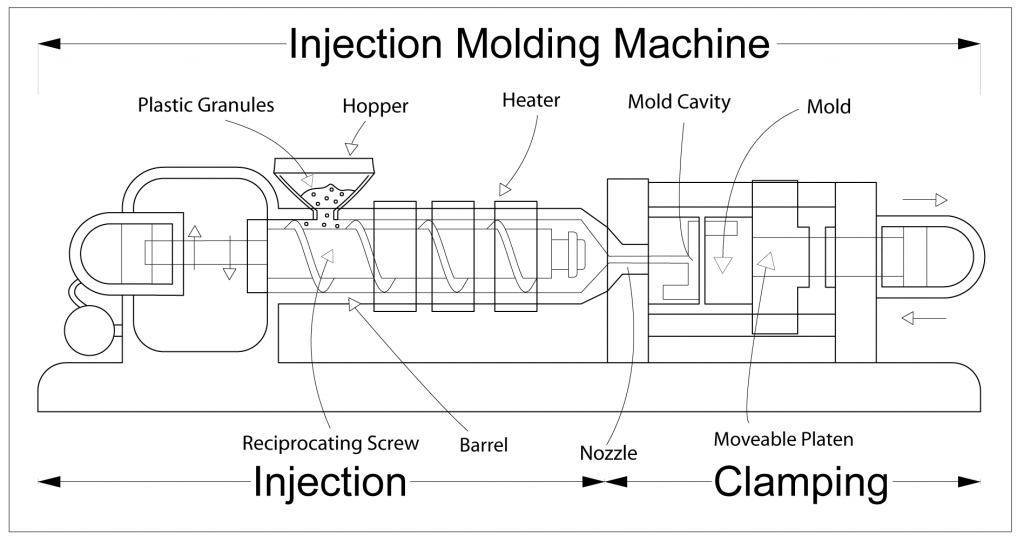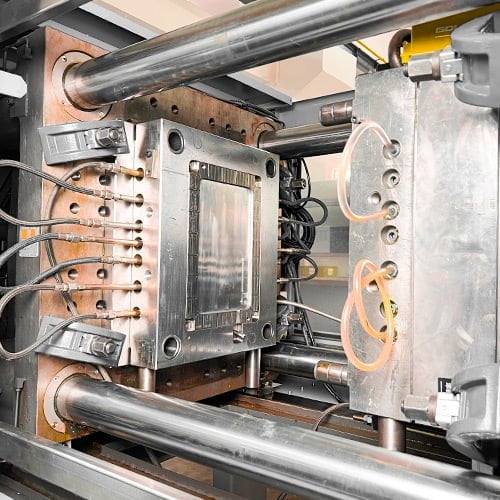The Duty of Plastic Injection Molding in Producing Affordable Industrial Components
The Duty of Plastic Injection Molding in Producing Affordable Industrial Components
Blog Article
Recognizing the Essentials of Plastic Injection Molding Procedures
Plastic shot molding serves as a keystone of modern-day production, offering a systematic method to generating complex elements with precision. Discovering these vital aspects might expose exactly how even minor changes can lead to significant enhancements in production results, increasing inquiries concerning the potential for advancement in this recognized procedure.
What Is Plastic Injection Molding?
Plastic shot molding is a widely used manufacturing process that transforms thermosetting and polycarbonate products into exact and complicated forms. This method is favored for its capability to generate high volumes of the same components with phenomenal accuracy, making it a vital approach in numerous sectors, consisting of vehicle, durable goods, and medical devices.
The procedure entails melting the selected plastic material and infusing it right into a mold and mildew under high pressure. The mold, created to the specs of the preferred component, allows the liquified plastic to materialize as it cools down and solidifies. Once the material has actually set, the mold and mildew is opened, and the completed component is expelled.
Plastic shot molding provides several benefits, consisting of decreased waste, uniformity in production, and the capacity to integrate intricate layouts that may be challenging with various other manufacturing techniques. In addition, it supports a broad variety of materials, each giving one-of-a-kind homes that can be customized for specific applications. As industries proceed to innovate, plastic injection molding remains at the center, allowing the development of advanced products that satisfy advancing customer demands.
The Injection Molding Process
The injection molding process is a sophisticated strategy that entails several vital stages to generate top notch plastic elements. Originally, plastic pellets are fed right into a heated barrel where they are merged a thick fluid. This molten plastic is then injected under high stress into a precision-engineered mold and mildew, which forms the product into the wanted kind.
As soon as the mold and mildew is loaded, the plastic is allowed to strengthen and cool, taking the form of the mold tooth cavity. Cooling time is essential, as it affects the cycle time and the final buildings of the molded component. After enough cooling, the mold and mildew opens, and the completed part is ejected utilizing ejector pins.

Products Used in Shot Molding
Different materials can be utilized in the injection molding procedure, each offering distinct residential properties that satisfy specific applications. The most frequently used materials include thermoplastics, thermosetting plastics, and elastomers.

Thermosetting plastics, like epoxy and phenolic materials, undertake a chemical change throughout the healing process, causing an inflexible, inflexible structure. These materials are excellent for applications needing high heat resistance and structural integrity, frequently great post to read made use of in auto parts and electric insulators.
Elastomers, including silicone and rubber-based products, provide versatility and strength. Their unique properties make them ideal for applications that require flexibility, such as gaskets and seals.
Furthermore, specialty products like bio-based plastics and compounds are acquiring grip for their ecological advantages and boosted efficiency attributes, expanding the scope of shot molding applications in different markets. Recognizing the properties of these products is essential for picking the appropriate type for details tasks.
Advantages of Injection Molding
Injection molding attracts attention as an extremely efficient production procedure that supplies countless advantages for producing complex components with accuracy. Among the most considerable advantages is the ability to develop elaborate designs that would certainly be difficult or tough to achieve with various other approaches (Plastic Injection Molding). The procedure enables detailed features and tight tolerances, ensuring high-grade parts
In addition, shot molding is recognized for its fast manufacturing capabilities, making it an ideal option for high-volume manufacturing. As soon as the mold is developed, parts can be created quickly, reducing lead times and increasing total efficiency. This efficiency not just lowers manufacturing prices however also offers an affordable edge on the market.
The convenience of materials used in shot molding additionally improves its appeal. A variety of thermoplastics and thermosetting polymers can be used, enabling producers to pick products that best fulfill their details requirements, including strength, warmth, and versatility resistance.
In addition, the process reduces waste, as excess product can often be recycled and reused. This sustainability aspect adds to a decreased ecological impact, making shot molding an accountable manufacturing option. Overall, the advantages of shot molding make it a recommended technique for many sectors.
Aspects Affecting Item Quality
While countless factors can influence product quality in injection molding, recognizing these elements is essential for attaining ideal outcomes. Key elements include product selection, refining criteria, and mold design.
Product option plays a crucial function, as various polymers show one-of-a-kind homes that affect flowability, toughness, and thermal security. Inadequate material choice can lead to problems such as bending or incomplete filling.
Handling parameters, consisting of temperature, cycle, and pressure time, have to be meticulously regulated. Variants in these setups can lead to variances in part dimensions and surface area finish. For example, exceedingly high temperature levels may create deterioration of the polymer, while poor stress can result in brief shots.
Mold and mildew design is similarly vital, as it determines the flow of the molten plastic and the cooling process. Improperly made molds may bring about uneven air conditioning rates, causing dimensional errors and residual Plastic Injection Molding stress and anxieties.

Conclusion
To conclude, plastic injection molding acts as a vital manufacturing procedure that enables the effective manufacturing of top notch elements. Proficiency of the shot molding procedure, consisting of the understanding of materials and the influence of numerous elements on item top quality, is vital for attaining optimum outcomes. The benefits of this technique, such as cost-effectiveness and style flexibility, additional highlight its relevance throughout multiple industries, strengthening its condition as a recommended selection for high-volume production.
Plastic injection molding serves as a foundation of modern production, providing a systematic strategy to generating complex parts with accuracy.Plastic shot molding provides numerous advantages, including lowered waste, find more information uniformity in production, and the ability to incorporate detailed styles that might be testing with other manufacturing methods (Plastic Injection Molding). As sectors continue to introduce, plastic shot molding remains at the center, enabling the development of innovative items that fulfill developing customer demands
The shot molding process is a sophisticated technique that involves several essential stages to create high-quality plastic parts.In final thought, plastic shot molding offers as a critical production procedure that allows the efficient production of premium elements.
Report this page